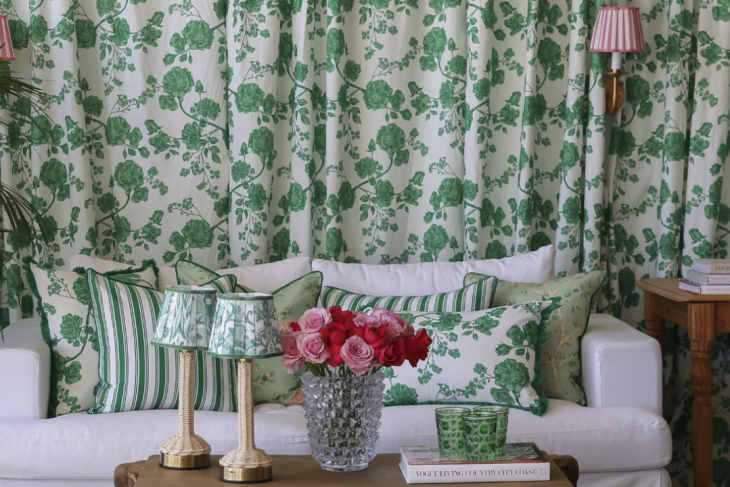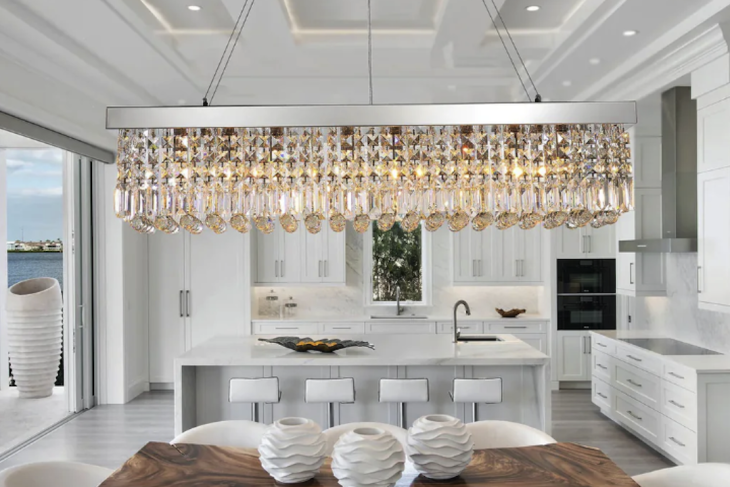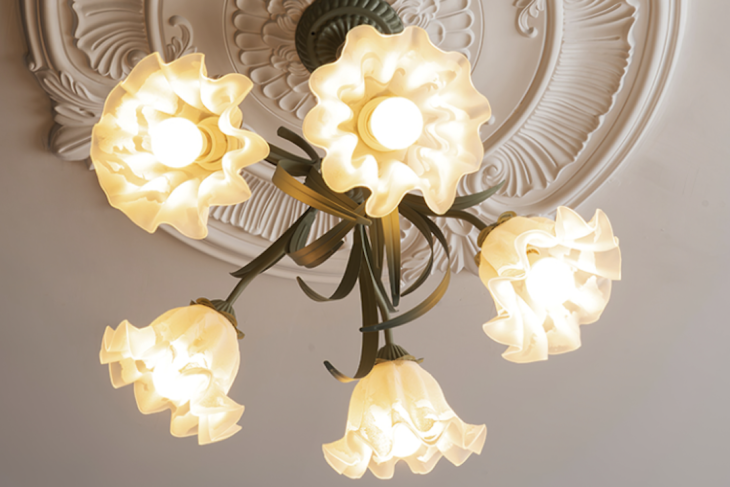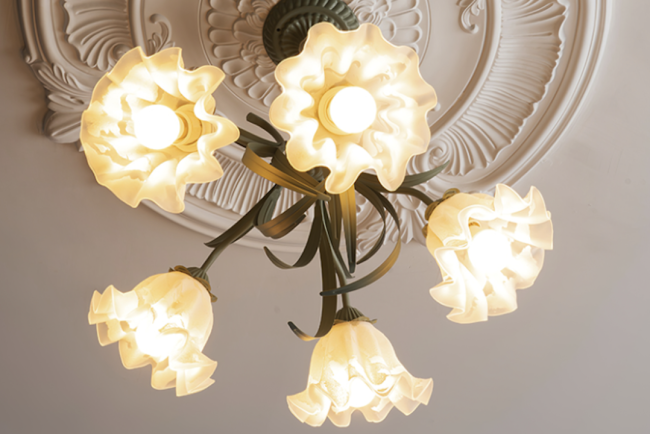
nolowa Chandeliers have long been a popular choice in interior design, adding elegance and sophistication to any space. These stunning light fixtures have a rich history and have evolved over time to incorporate modern technology and design trends. From their origins as candle holders to the use of gas and electricity, chandeliers have become a staple in homes, hotels, and other luxurious spaces. In this article, we will explore the history of chandeliers, their anatomy, different styles, materials used in construction, how to choose the right size for your space, lighting techniques, maintenance and care, their role in interior design, and how they can be used as a statement piece.
The History of Chandeliers: From Candles to Lightbulbs
The history of chandeliers dates back to ancient times when they were used as a source of light. The word “chandelier” comes from the French word “chandelle,” which means candle. In the early days, chandeliers were simply wooden crosses with spikes to hold candles. They were hung from the ceiling to provide light in large rooms or halls.
As technology advanced, chandeliers evolved to incorporate different sources of light. In the 18th century, gas was introduced as an alternative to candles. Gas chandeliers became popular in wealthier households and public spaces. These chandeliers featured multiple arms with gas jets that provided a brighter and more consistent light source.
With the invention of electricity in the late 19th century, chandeliers underwent another transformation. Electric chandeliers became more common and accessible to a wider range of people. The use of lightbulbs allowed for more intricate designs and the ability to control the brightness of the light.
The Anatomy of a Chandelier: Understanding Its Components
To fully appreciate the beauty and functionality of a chandelier, it is important to understand its various components. A typical chandelier consists of several key parts, each serving a specific purpose.
1. Frame: The frame is the structural backbone of the chandelier. It is usually made of metal and provides support for the other components.
2. Arms: The arms of a chandelier extend from the frame and hold the light sources. They can be curved or straight, depending on the style of the chandelier.
3. Bobeches: Bobeches are small cups or dishes that sit at the base of each arm. They catch any dripping wax or debris from candles and protect the rest of the chandelier.
4. Light Sources: The light sources in a chandelier can vary depending on the design and technology used. They can be candles, gas jets, or lightbulbs.
5. Prisms and Crystals: Prisms and crystals are decorative elements that hang from the arms of the chandelier. They refract and reflect light, creating a dazzling display.
6. Canopy: The canopy is the part of the chandelier that attaches to the ceiling. It covers the electrical wiring and provides a finished look.
Chandelier Styles: From Classic to Contemporary
Chandeliers come in a wide range of styles, from classic to contemporary, allowing you to find one that suits your personal taste and complements your interior design. Here are some popular styles to consider:
1. Classic: Classic chandeliers feature ornate designs with intricate details and embellishments. They often have crystal or glass accents and are reminiscent of traditional European styles.
2. Modern: Modern chandeliers have sleek lines and minimalist designs. They often feature geometric shapes and use materials like metal and glass to create a clean and contemporary look.
3. Contemporary: Contemporary chandeliers combine elements of both classic and modern styles. They may feature traditional materials like crystal or glass but with a more streamlined and updated design.
4. Rustic: Rustic chandeliers are perfect for adding a touch of warmth and charm to a space. They often incorporate natural materials like wood and wrought iron and have a more casual and relaxed feel.
5. Industrial: Industrial chandeliers are inspired by the raw and utilitarian look of factories and warehouses. They often feature exposed bulbs, metal accents, and a rugged aesthetic.
Materials Used in Chandelier Construction: Crystal, Glass, and Metal
Chandeliers can be made from a variety of materials, each with its own unique characteristics and aesthetic appeal. The choice of material can greatly impact the overall look and feel of the chandelier. Here are some common materials used in chandelier construction:
1. Crystal: Crystal is a popular choice for chandeliers due to its ability to refract light and create a dazzling display. Crystal chandeliers are often associated with luxury and elegance. They can be made from various types of crystal, such as Swarovski or lead crystal, each offering its own level of brilliance.
2. Glass: Glass is another common material used in chandelier construction. It can be clear or colored, depending on the desired effect. Glass chandeliers can range from simple and understated to intricate and ornate.
3. Metal: Metal is often used for the frame and arms of a chandelier. It provides strength and stability while also allowing for intricate designs. Common metals used include brass, bronze, iron, and chrome.
4. Other Materials: Chandeliers can also incorporate other materials such as wood, fabric, or even plastic. These materials can add texture and visual interest to the design.
Each material has its own benefits and drawbacks. Crystal chandeliers offer unparalleled sparkle but can be more expensive. Glass chandeliers are versatile and come in a wide range of styles but may require more maintenance to keep them clean. Metal chandeliers are durable and can withstand the test of time but may lack the same level of elegance as crystal or glass.
Choosing the Right Size Chandelier for Your Space

Choosing the right size chandelier for your space is crucial to ensure it fits proportionally and doesn’t overwhelm or underwhelm the room. Here are some tips to help you select the appropriate size:
1. Consider the Room Size: The size of the room will dictate the size of the chandelier. A small chandelier in a large room may get lost, while a large chandelier in a small room can feel overpowering. Measure the dimensions of the room and consider the height of the ceiling to determine an appropriate size range.
2. Determine the Chandelier’s Diameter: A general rule of thumb is to choose a chandelier with a diameter that is approximately one-half to two-thirds the width of the table or area it will be placed above. For example, if you have a dining table that is 48 inches wide, a chandelier with a diameter between 24 and 32 inches would be suitable.
3. Consider Ceiling Height: The height of your ceiling will also impact the size of the chandelier. For standard 8-foot ceilings, a chandelier should hang approximately 30 to 36 inches above a dining table or 7 feet above the floor in other areas. For higher ceilings, you can adjust the height accordingly.
4. Multiple Chandeliers: In larger rooms or spaces with high ceilings, you may opt for multiple chandeliers instead of one large fixture. This can create a more balanced and visually appealing look.
5. Visual Weight: Consider the visual weight of the chandelier in relation to other elements in the room. If you have heavy furniture or bold architectural features, a larger and more substantial chandelier may be appropriate. Conversely, if your space is more minimalistic, a smaller and simpler chandelier may be more suitable.
Lighting Techniques: How Chandeliers Create Ambiance
Chandeliers play a crucial role in creating ambiance in a room. They provide both functional and decorative lighting, setting the mood and enhancing the overall atmosphere. Here are some lighting techniques used in chandeliers:
1. Direct Lighting: Chandeliers provide direct lighting by illuminating the space directly below them. This can be useful for tasks such as reading or dining.
2. Indirect Lighting: Chandeliers can also provide indirect lighting by bouncing light off the ceiling or walls. This creates a softer and more diffused light that is ideal for creating a warm and inviting ambiance.
3. Layered Lighting: Chandeliers can be used as part of a layered lighting scheme, where multiple light sources are used to create different levels of illumination. This can include recessed lighting, wall sconces, or floor lamps. Layered lighting adds depth and dimension to a room and allows for flexibility in adjusting the brightness and mood.
4. Dimmers: Installing dimmers on your chandelier allows you to control the intensity of the light and create different atmospheres for different occasions. Dimmers are especially useful in dining rooms or bedrooms where you may want to adjust the lighting based on the desired mood.
Maintenance and Care: Keeping Your Chandelier Sparkling
To keep your chandelier looking its best, regular maintenance and care are essential. Here are some tips to help you keep your chandelier sparkling:
1. Turn Off Power: Before cleaning or performing any maintenance on your chandelier, always turn off the power at the circuit breaker to ensure your safety.
2. Dust Regularly: Dusting your chandelier regularly will help prevent dirt and grime from building up. Use a soft, lint-free cloth or a feather duster to gently remove dust from all surfaces.
3. Clean Crystals or Glass: If your chandelier has crystals or glass accents, they may require more thorough cleaning. Mix a solution of mild dish soap and warm water and use a soft cloth or sponge to gently clean the crystals. Avoid using harsh chemicals or abrasive materials that can damage the surface.
4. Check for Loose Parts: Periodically check for any loose or damaged parts on your chandelier. Tighten any loose screws or connections and replace any broken or missing pieces.
5. Professional Cleaning: For more intricate or delicate chandeliers, it may be best to hire a professional to clean and maintain them. They have the expertise and tools to ensure your chandelier is properly cared for without causing any damage.
Regular maintenance and care will not only keep your chandelier looking beautiful but also help prolong its lifespan.
Chandeliers in Interior Design: Enhancing Your Décor
Chandeliers are not just functional light fixtures; they are also an important element in interior design. They can enhance the overall aesthetic of a room and tie together different design elements. Here are some tips for incorporating chandeliers into your interior design:
1. Consider the Style: Choose a chandelier that complements the style of your space. If you have a traditional or classic design, opt for a chandelier with ornate details and crystal accents. For a more modern or contemporary space, choose a sleek and minimalist chandelier with clean lines.
2. Scale and Proportion: Ensure that the size of the chandelier is appropriate for the room and other furniture pieces. A small chandelier in a large room may look out of place, while a large chandelier in a small room can overwhelm the space.
3. Placement: Consider the placement of the chandelier within the room. In dining rooms, it is common to hang the chandelier above the center of the table. In living rooms or entryways, it can be placed as a focal point in the room.
4. Balance: Chandeliers should be balanced with other elements in the room. If you have high ceilings or large furniture pieces, a larger and more substantial chandelier may be appropriate. If your space is more minimalistic, a smaller and simpler chandelier may be a better fit.
5. Layered Lighting: Use the chandelier as part of a layered lighting scheme to create different levels of illumination. Combine it with other light sources such as recessed lighting, wall sconces, or floor lamps to add depth and dimension to the room.
Chandeliers in Different Rooms: Living Spaces, Dining Rooms, and Bedrooms
Chandeliers can be used in various rooms throughout the home to add a touch of elegance and sophistication. Here are some tips for incorporating chandeliers into different spaces:
1. Living Spaces: In living rooms or family rooms, chandeliers can serve as a focal point and create a sense of grandeur. Choose a chandelier that complements the overall design of the space and provides adequate lighting for the activities that take place in the room.
2. Dining Rooms: Dining rooms are a popular space for chandeliers. Hang the chandelier above the center of the dining table to provide both functional and decorative lighting. Ensure that the size of the chandelier is appropriate for the table and room dimensions.
3. Bedrooms: Chandeliers can add a touch of luxury and romance to bedrooms. Hang a small chandelier above the bed or in a seating area to create a cozy and intimate atmosphere. Consider using dimmers to adjust the lighting based on your desired mood.
4. Entryways: Make a statement in your entryway by installing a grand chandelier that welcomes guests and sets the tone for the rest of your home. Ensure that the size of the chandelier is appropriate for the height of the ceiling and scale of the space.
Chandeliers as a Statement Piece: Adding Drama to Your Space
Chandeliers have the power to transform a room and become a statement piece that adds drama and visual interest. Here are some tips for selecting a chandelier that adds drama to your space:
1. Size and Scale: Choose a chandelier that is larger than what you would typically select for the space. This will create a bold and dramatic effect. Ensure that the size of the chandelier is appropriate for the height of the ceiling and other elements in the room.
2. Unique Design: Look for chandeliers with unique designs or unconventional materials. This will make them stand out and become a focal point in the room. Consider chandeliers with interesting shapes, textures, or colors.
3. Placement: Consider placing the chandelier in an unexpected location, such as above a seating area or in a bathroom. This will add an element of surprise and create a dramatic effect.
4. Lighting Effects: Choose a chandelier that offers different lighting effects, such as adjustable brightness or color-changing capabilities. This will allow you to create different moods and atmospheres in the room.
Remember, when using a chandelier as a statement piece, it should be the focal point of the room and complement the overall design without overpowering it.
Chandeliers have a rich history and continue to be a popular choice in interior design. They add elegance, sophistication, and ambiance to any space. Understanding the history, anatomy, styles, materials, and lighting techniques of chandeliers can help individuals make informed decisions when selecting and incorporating chandeliers into their own spaces. Whether it be a traditional crystal chandelier in a grand foyer or a modern, minimalist chandelier in a contemporary living room, there is a wide range of options available to suit any style and preference. Chandeliers not only provide functional lighting but also serve as stunning focal points that can enhance the overall aesthetic of a room. With their timeless beauty and versatility, it is no wonder that chandeliers have stood the test of time and continue to be a beloved choice in interior design.
If you’re looking for more inspiration on lighting ideas, check out this article on “Lighting Mirror Ideas for Your Bathroom” from RV Supply Depot. It offers creative and practical suggestions on how to enhance your bathroom’s ambiance with the right lighting fixtures and mirrors. From modern and sleek designs to rustic and vintage styles, this article covers a wide range of options to suit any taste. Whether you’re renovating your bathroom or simply looking to update its lighting, this article will provide you with valuable insights and ideas. Read more here.














